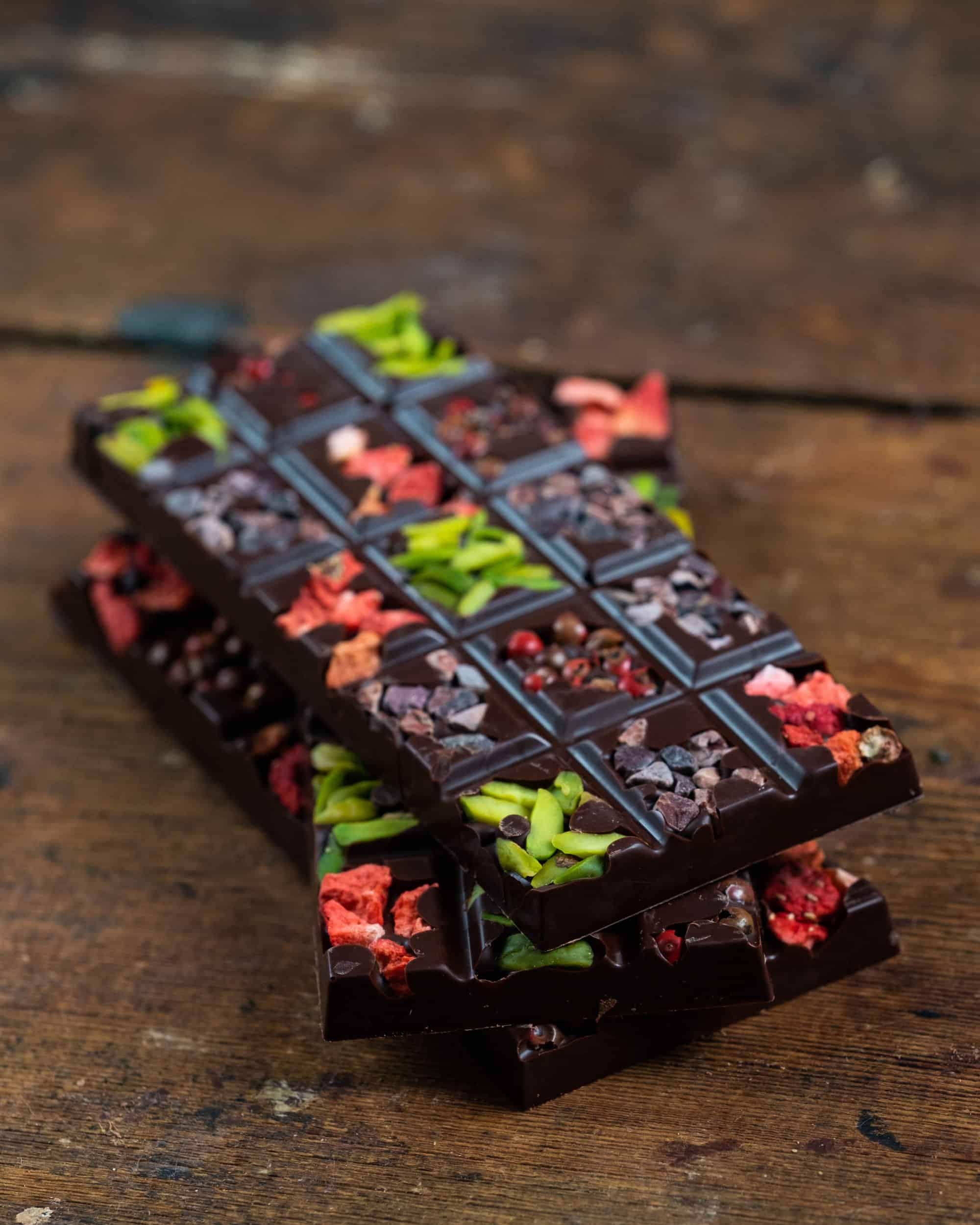The Art of Chocolate Making Using Natural Ingredients
Bonbons are chocolates made in polycarbonate moulds. The cavities are
painted with coloured cocoa butters, shelled and filled with 2 or more layers.
Technical skills that lead to creative expression
Elements covered in this class …
Bonbon Design
This bonbon uses no colours for the design. Instead, we’re using a coffee caramel blonde chocolate. The speckles of coffee through the chocolate give a subtle, natural design and add to the coffee flavour of this bonbon. For this class I am using a Chocolate World 2116 mould, which is a larger capacity mould, 13g to be exact. This gives us more decorating space, but also more internal space for layering.
Vodka Coffee Caramel Ganache
This is another bonbon that is centred around a locally produced alcohol; vodka. This vodka is produced (field to bottle) about 5 miles from my house. Pairing it with coffee and caramel was a mind blowing result for me. I’m not a drinker, so this really blew my mind and made me understand why an Espresso Martini would be so delicious to those who enjoy alcohol. This caramel ganache is brimming with the flavours of vodka, freshly brewed coffee and caramel!
Crunchy Oat Praline
You don’t want to overdo this bonbon by adding more flavours, but a little texture and a complimentary spice did wonders for it. The base of this praline is cashew, which is very neutral in flavour for a nut. I’ve added a sweet, crunchy oat for texture and nutmeg to compliment the vodka and coffee. It’s a stunning result.
Cleaning & Polishing Moulds
This might seem like an obvious point, but caring for your professional moulds is very important. The way you care for them will ensure longevity of the mould and a brilliant, mirror shine on the chocolate.
Shelling & Capping
No matter how much experience you have in this, you can always refine your technique and learn something new. My technique for both these applications has changed over the years, and now I cap by applying chocolate to the back of the mould, rather than using an acetate sheet. It’s quick and easy once you know some little tricks and get some experience under your belt.




